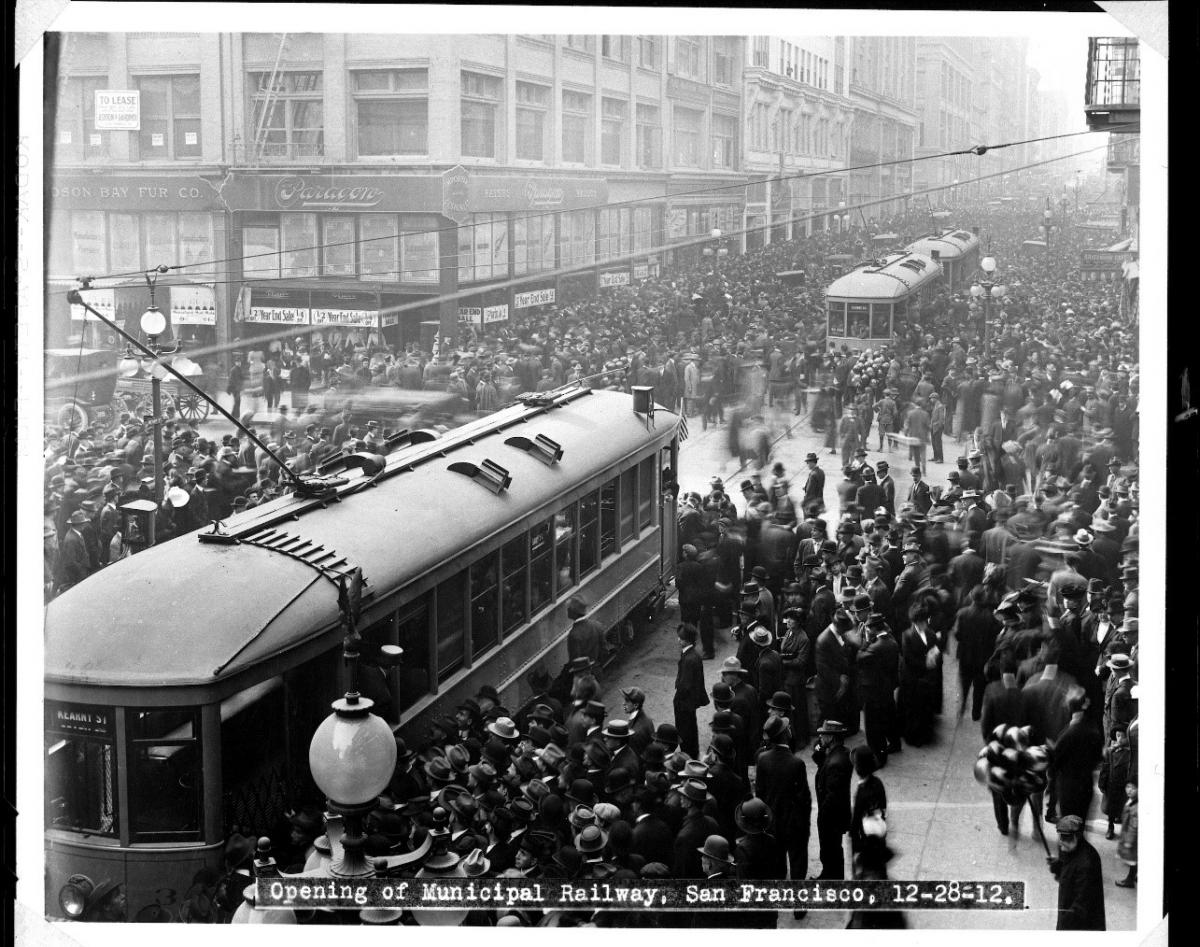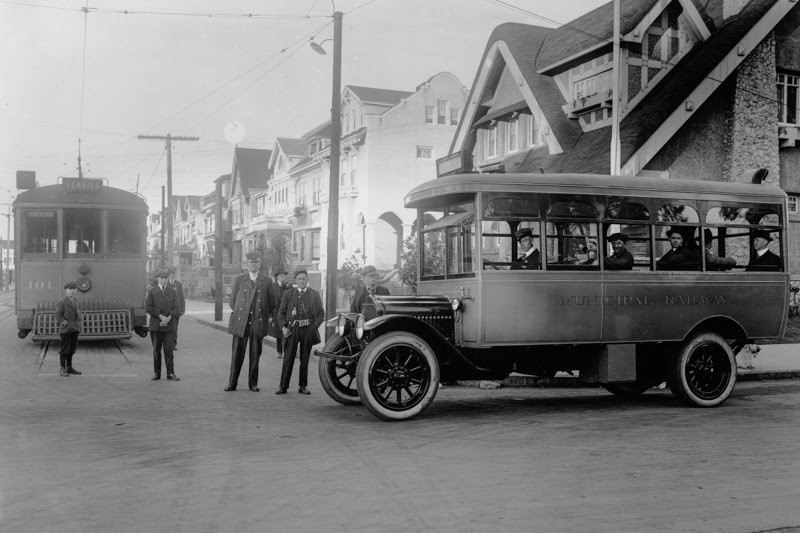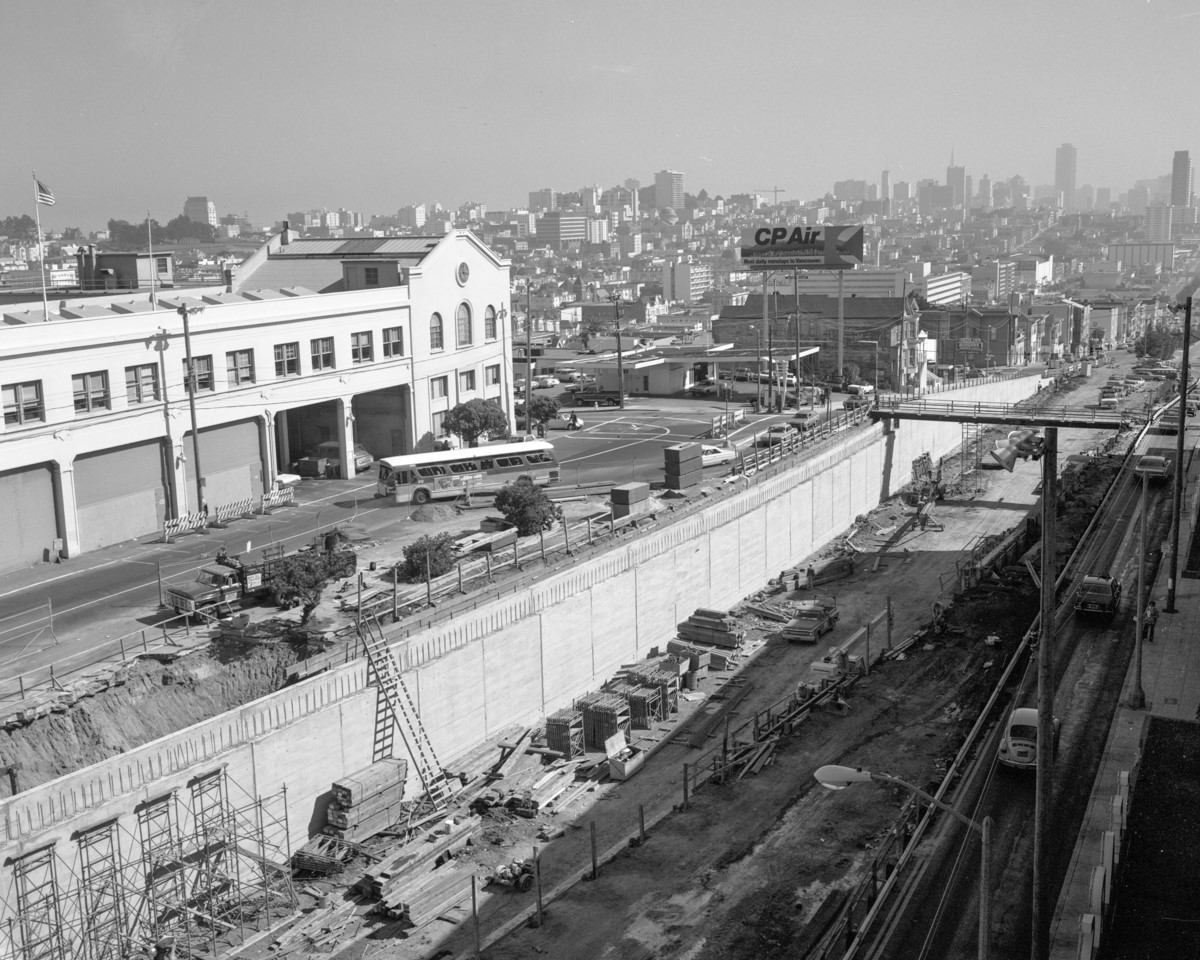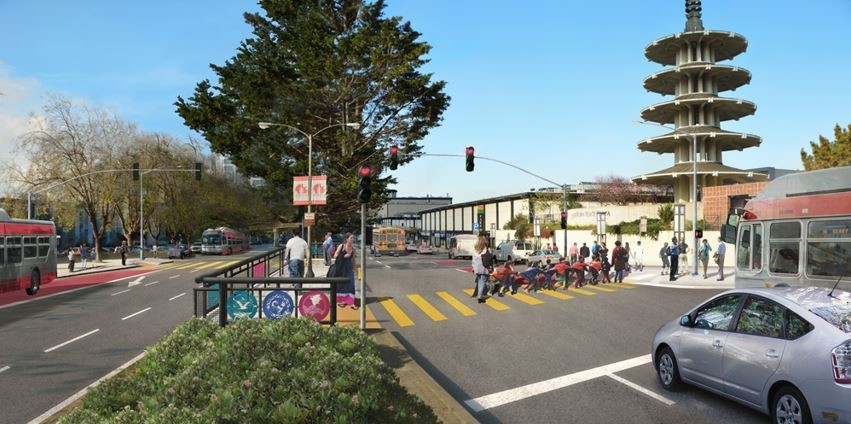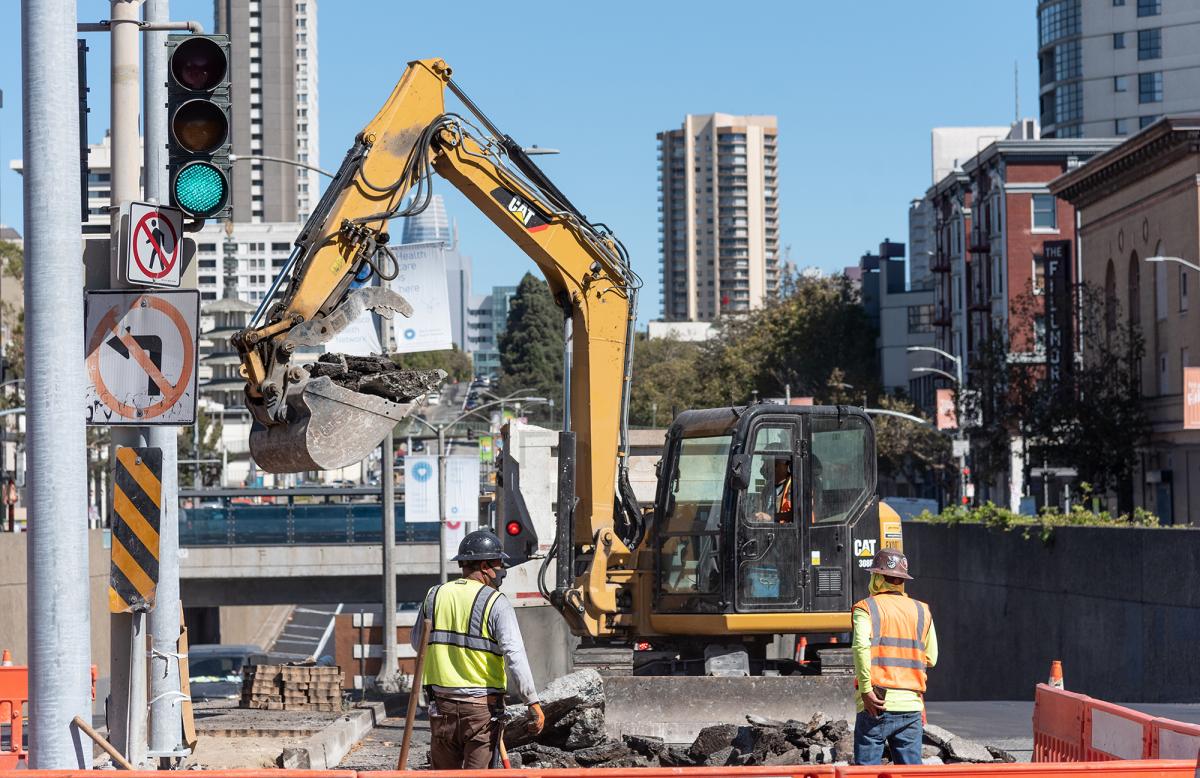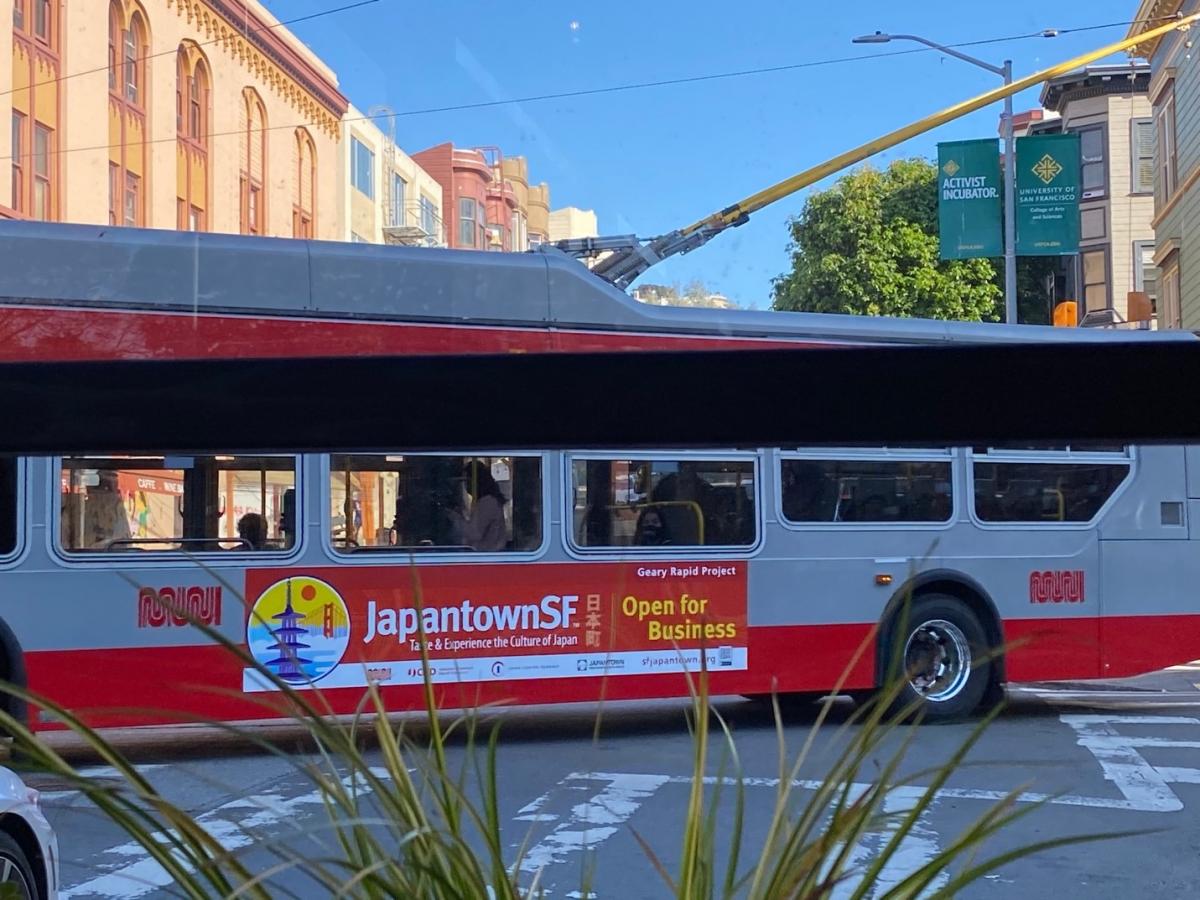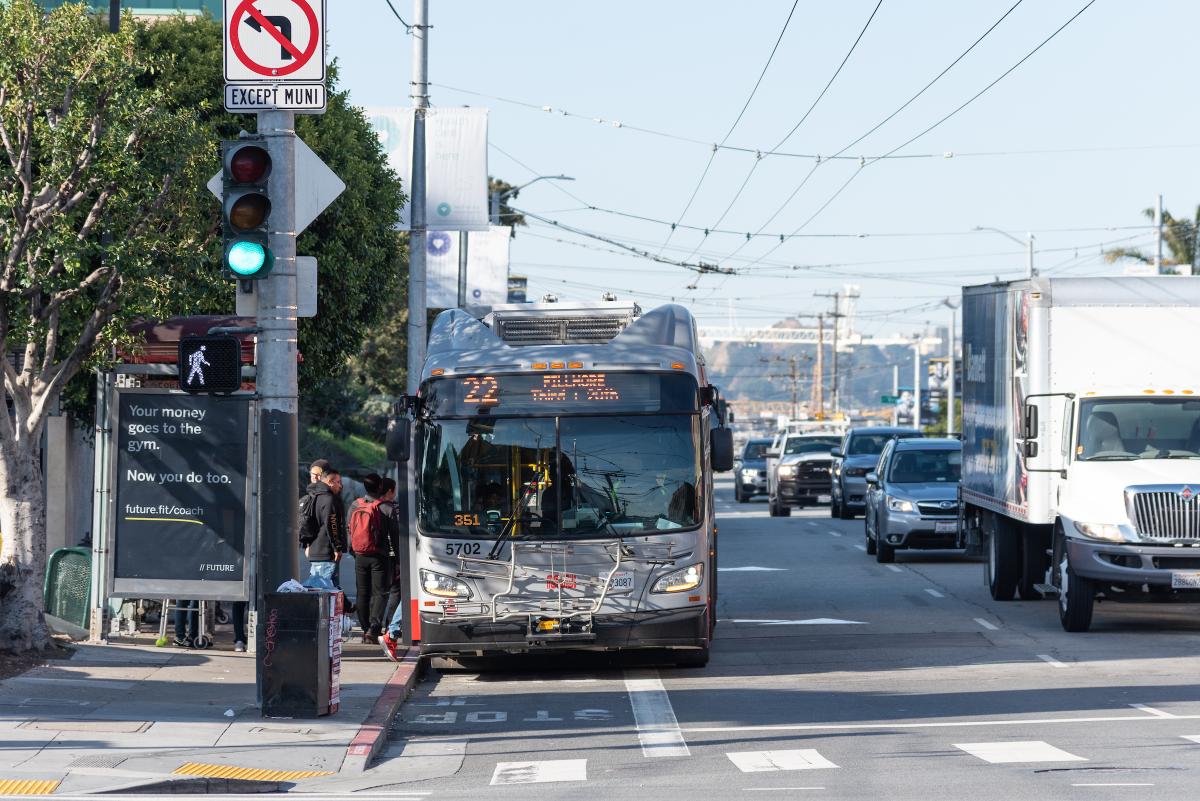By Mariana Maguire
In response to budget constraints and challenges resulting from the COVID-19 pandemic, the Better Market Street project team released updated design proposals for Market Street between 5th and 8th streets in September 2020. We then hosted multiple stakeholder and public meetings, posted a public survey and held a month-long virtual open house in order get feedback on the proposals.
We received and reviewed hundreds of public comments and found four recurring areas of concern:
- curb lane sharing,
- speed tables,
- curbs between vehicle lanes and
- car-free Market Street enforcement.
Based on these issues, we are proposing the following additional modifications:
- Lowering the speed limit to 20 miles per hour between Franklin and Steuart streets
- Adding speed tables next to boarding islands to slow vehicle traffic and discourage speeding where transit riders and pedestrians are more vulnerable
- Removing previously proposed mountable curbs between vehicle lanes and explore other ideas for lane separators and
- Exploring the use of traffic cameras to monitor illegal turns onto Market Street and issue citations in order to improve enforcement of the Market Street ban on private vehicles
We also will make several changes to improve safety for people walking and biking, while maintaining access for taxis and commercial vehicles along the majority of Market Street. These include:
- Installing signage clearly indicating that taxis and paratransit may use loading zones at all times (already completed) and
- Implementing four new required right turns for taxis and commercial vehicles, eastbound at 8th and 6th streets and westbound at Kearny/Geary and Turk streets.
This will further reduce conflicts between motorized vehicles and people walking and biking along one of San Francisco’s highest injury corridors.

Illustration of existing and new proposed required right turns off Market Street and turn exemptions on Mission Street.
These changes build upon those approved in 2019 including:
- Implementing peak hour, peak direction commercial vehicle loading restrictions (6:00 - 9:30 a.m. south side, 3:00 - 7:30 p.m. north side) to reduce conflicts during rush hours
- Requiring right turns for commercial vehicles at three locations (eastbound at 12th and Beale street, and westbound at Hayes and Larkin street).
Also, exempting taxis from left-turn restrictions along Mission Street (eastbound at 11th and 9th streets, westbound at 2nd, New Montgomery, 5th, 6th and 11th streets) will facilitate taxi mobility along the Mission Street Bus and Taxi only lanes, offsetting the added restrictions on Market Street.
Market Street is one of our city’s busiest areas for people walking and biking. As a part of San Francisco’s high-injury corridor, it includes four of the top ten most dangerous intersections involving collisions for people on bikes and for pedestrians. The creation of a Car-free Market Street initiated the beginning of a safer era for everyone on Market Street. Lowering speeds for the remaining vehicles will further improve safety.
To accomplish this, we propose installing speed tables next to boarding islands. Speed tables help strengthen the 10-mile-per-hour safety zones next to boarding islands and will help reduce overall speeds on Market Street. To discourage speeding, vehicles will not be able to change lanes to avoid the speed tables at the new proposed locations.

Illustration of new proposed speed table locations near boarding islands on Market Street.
Next Steps
On January 19, the SFMTA Board of Directors will consider minor additions to the 2019 legislation, including parking changes on Ellis, Hayes and Fell streets and turn restrictions to support the two-way conversion of Jones Street between Market Street and Golden Gate Avenue, as well as permanent adjustments near 2nd and Stevenson streets that were implemented on a temporary basis as part of car-free Market Street.
To see the public hearing notice for the SFMTA Board of Directors’ meeting on January 19, visit SFMTA.com/BetterMarketStreet. For project details visit the Better Market Street project website.
Published January 09, 2021 at 12:58AM
https://ift.tt/3nr9bbz
